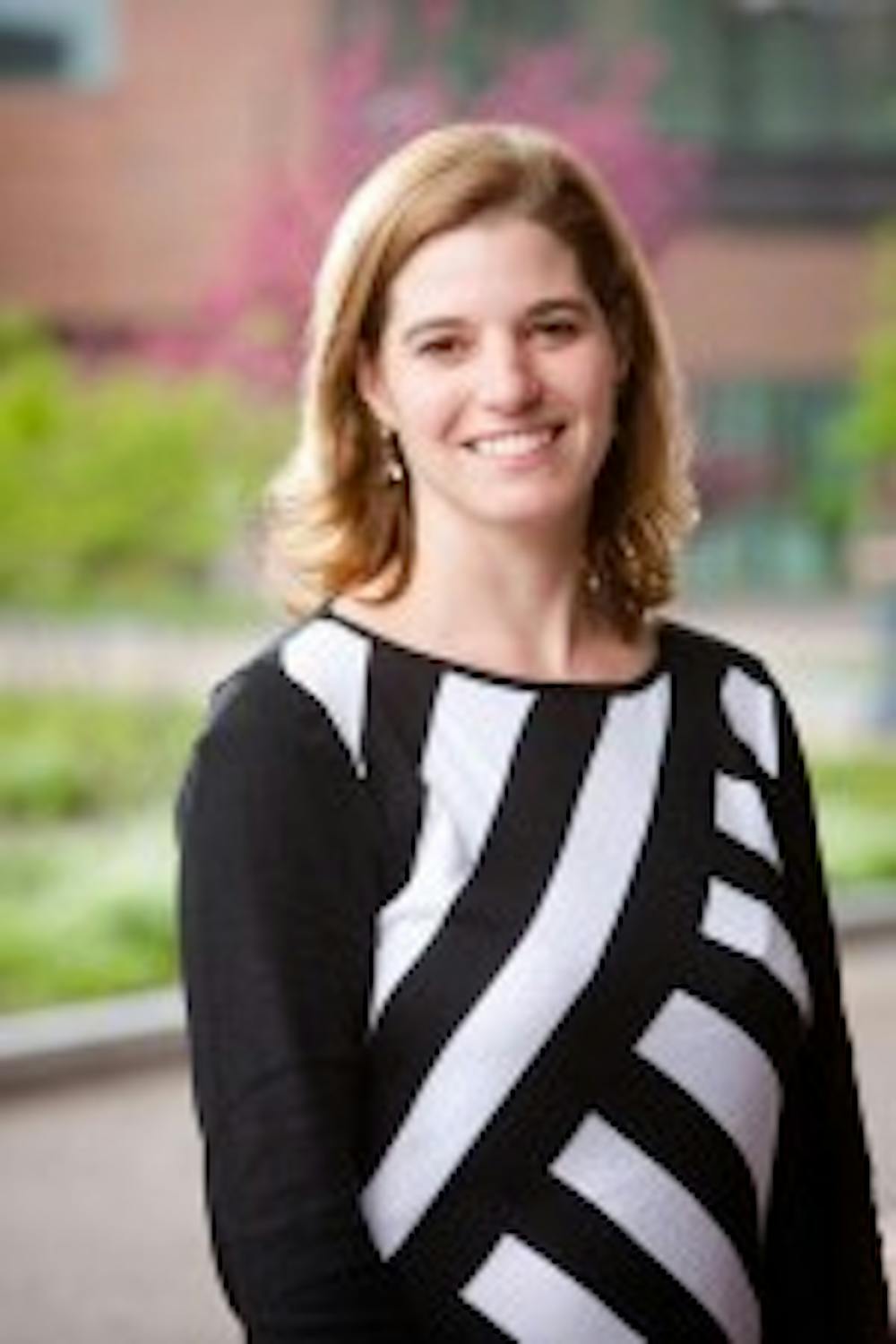In January 2006, former postal employee Jennifer San Marco walked into the Goleta Mail Processing Plant in California, pulled out a pistol and, shot six postal employees before ending her own life.
Bullying doesn't end after high school.
Amanda B. Nickerson, the newly-appointed director of the Jean M. Alberti Center for the Prevention of Bullying Abuse and School Violence has spent the past two months reaching out to local schools and community groups to help the public better understand the role of bullying, and the often harmful functions of technology in classrooms and workplaces.
"I want [the center] to be known as a go-to place for resources for prevention and intervention," Nickerson said.
In the last 12 months, over 25 percent of all UB students reported that they were verbally threatened in some way, according to statistics from Wellness Education Services.
Marginalized groups on campus – who are singled out based on identity factors such as race, religion, ability, gender, and sexual orientation – are especially prone to being harassed for issues relating to identity, according to James Bowman, the special populations outreach coordinator at Wellness Education Services.
Research compiled by professors at Duke University indicates that 19 out of 22 school shooters experienced ostracism prior to committing their violent acts. "Ostracism has a wide range of destructive impacts on an individual," said Jun Yang, a graduate student in the School of Management, whose research explores the effect of ostracism on the mental health of victims."
Despite increases in the use of social media as a bullying tool, the number of reported bullying incidences remains constant. Technology is not turning children into bullies; it instead is revolutionizing the ways children can bully others, according to Nickerson. With an increasing dependence on social media for communication, it has become harder for children to escape their bullies outside of school.
"So many people don't know how to use [social media] in a responsible manner," Nickerson said, stressing the importance of privacy settings and other security measures in preventing unwanted attention.
Bullying is not limited to academic settings. Incidences of harassment, abuse, and sexual assault seen in the workplace are, essentially, forms of bullying. Similarly, if an individual is ignored and excluded by others in the workplace, they may commit aggressive acts themselves.
Yang cited the San Marco case, In which "severe exclusion and rejection from the workplace" led to the horrifying incident.
Nickerson comes to UB after nine years at the University at Albany, where she focused on school crisis prevention and intervention.
Now that the school year has started, Nickerson will be presenting a series of workshops and lectures designed to stop bullying and violence in schools in Western New York. She envisions a cooperative relationship between the university and parents, practitioners, and educators in the community.
She wants to start the discussion about the scope of bullying and the challenges and opportunities that come with it. She is also working with the Orchard Park School District to implement an internationally used bullying prevention program.
A major flaw in many anti-bullying campaigns is that although the programs do much to change perceptions about bullying, they do not actually lead to fewer incidents of harassment.
Nickerson hopes to lead the anti-bullying center forward and build partnerships between departments and organizations at the university and agencies throughout Western New York. She and her colleagues hope to develop methods of prevention and intervention that reduce the prevalence of bullying in academic and work settings.
Email: news@ubspectrum.com





